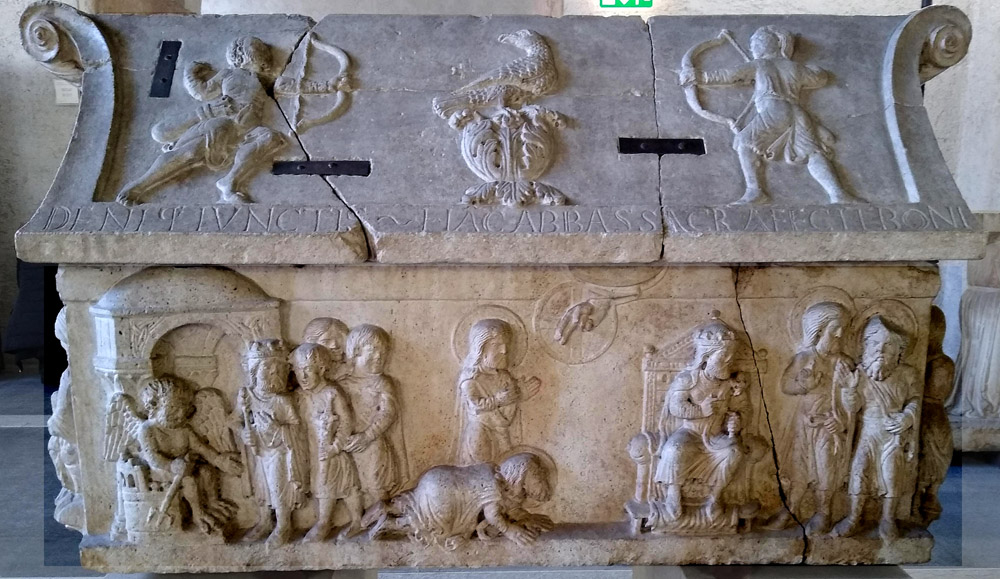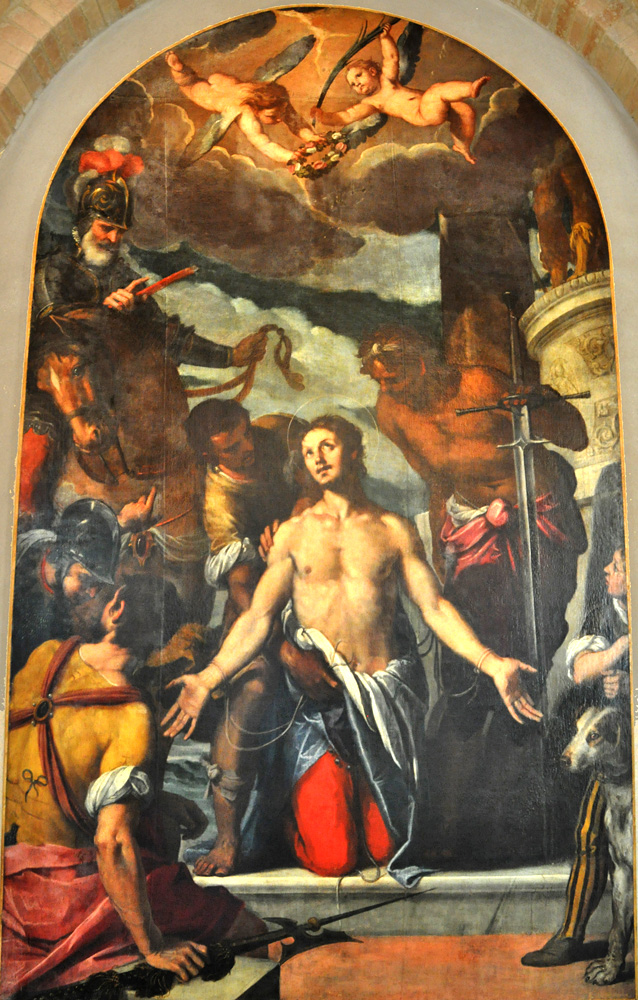In their images the two saints are pictured as virtually identical young men in identical military uniforms. The identical uniforms are mentioned in one of the legends, and may also refer to a comment in another one that "they were united in Christian charity, and inseparable…not from natural attraction but from the unity of faith."1 In the west they are dressed as Roman soldiers but without any other attributes, as in the third picture at right. In Orthodox icons they hold the hand crosses that denote martyrdom and may be dressed either as soldiers or as noble courtiers. In one case the icon pictures them in the iron collars that Maximian had ordered. In the sarcophagus relief at right and in their portraits in Santa Maria dell'Ammiraglio, Palermo (Kitzinger, plates 71and 72) their refusal is signified by palm-out gestures.
Prepared in 2020 by Richard Stracke, Emeritus Professor of English, Augusta University.

The four sides of this sarcophagus trace the story of Sergius and Bacchus from their refusal to enter Jupiter's temple to their life in Heaven. (See the description page.)

Ridolfi, The Martyrdom of St. Sergius description page.)
Michael Damaskinos, Saints Serge and Bacchus with St. Justina of Padua. These three saints share their feast day, October 7, with the 1571 Battle of Lepanto, which put an end to Turkish naval dominance. The Turk is represented by a monster beneath Justina's feet. See the description page.
DATES
- Feast day: October 7
BIOGRAPHY
- The Passion of SS. Serge and Bacchus.
- Butler, IV, 58.
- Acta Sanctorum, October vol. 3, 833-83.
- Carolus de Smedt et al., "Passio antiquior SS. Sergi et Bacchi Nunc Primum Graece Edita," Analecta Bollandiana, XIV (1895), 373-95.
NOTES
1 Acta Sanctorum, October vol. 3, 872, 863.